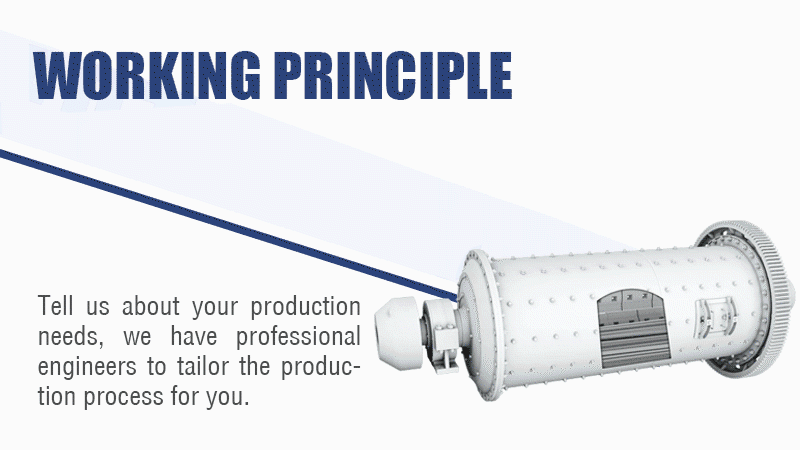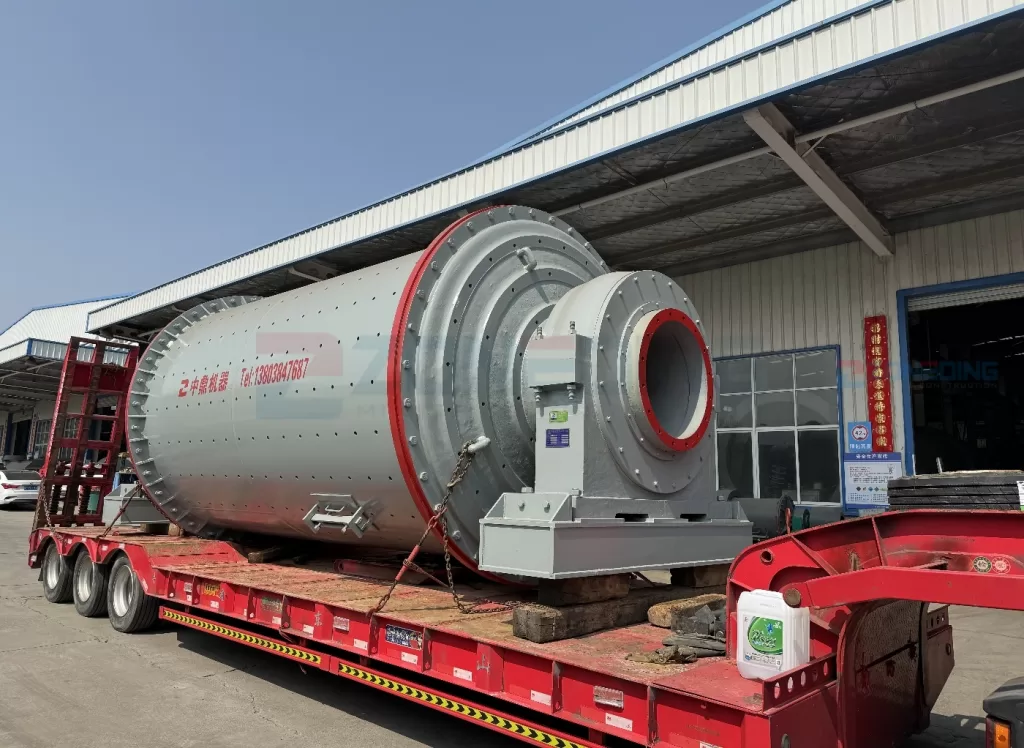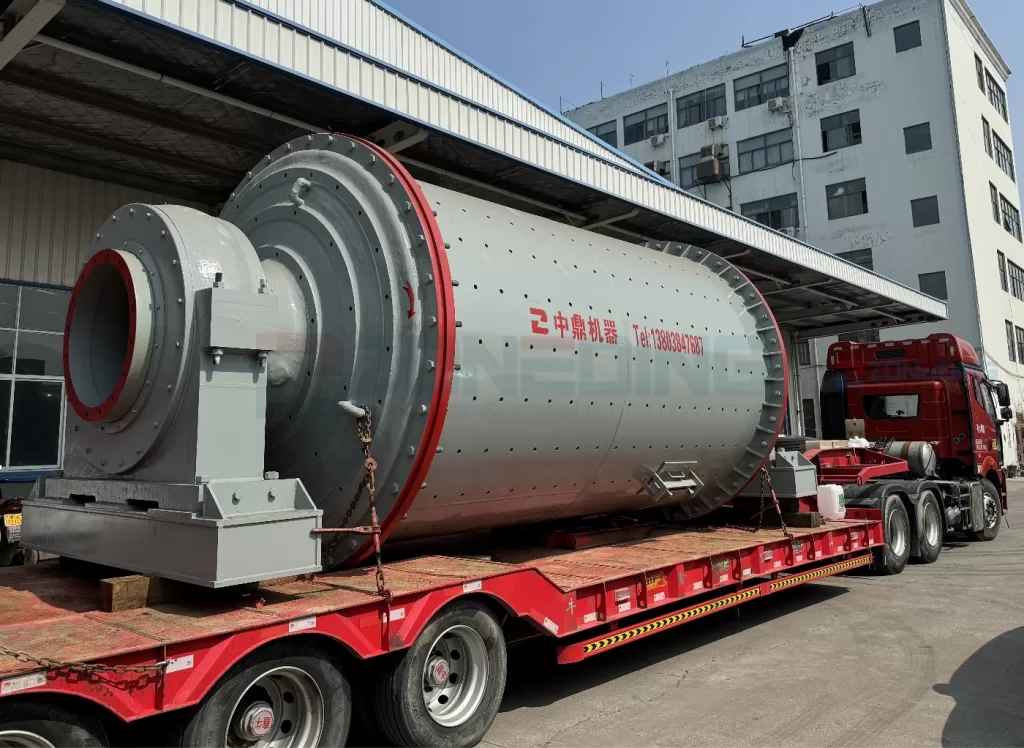Search the whole station Crushing Equipment
Our Rod Mill are available in different styles and numerous model sizes in each style to adapt to various grinding requirements.
The rod mill is a grinding equipment that uses steel rods as the grinding media, widely used in metal and non-metal mines, water conservancy, building materials, chemicals, refractories, metallurgy, glass, and other industries. This equipment adopts advanced controllable feeding and discharging technology, combined with actual grinding materials, and is equipped with suitable grinding bodies to change the traditional surface contact to line contact, resulting in more uniform discharge particle size and higher production capacity. Rod mills are available in both dry and wet forms for users to choose according to their actual situations.
A rod mill is a type of grinding mill that uses steel rods as the grinding media. These rods, spanning the length of the mill, grind material through rolling and impact as the mill rotates. This makes it suitable for coarse grinding, producing a product with a relatively uniform particle size.

Rod mills are primarily used for coarse grinding, often as a primary grinding stage before finer grinding processes. They are commonly used in the mining industry to prepare ore for further processing. They are also used in aggregate production to create materials for construction.
The working principle of the rod mill is to drive the rotation of the cylinder through the motor and the surrounding large gear reduction transmission. The interior of the cylinder is equipped with appropriate grinding media – steel rods. The grinding media is lifted to a certain height under the action of centrifugal force and friction and falls in a throwing or leaking state. The material to be ground continuously enters the interior of the cylinder through the feed port and is crushed by the moving grinding media. The product is discharged outside the machine through the force of overflow and continuous feeding for the next process operation.



If you are interested in this, please contact us as soon as possible! We will provide you with more than 2 solutions for you to choose from.
| Model | Shell rotation speed(r/min) | Feeding size(mm) | Discharging size(mm) | Processing capacity (t/h) | Power (kw) | Total weight (t) |
| MBS0918 | 36-38 | ≤25 | 0.833-0.147 | 0.62-3.2 | 18.5 | 5.9 |
| MBS0924 | 36 | ≤25 | 0.833-0.147 | 0.81-4.3 | 22 | 6.7 |
| MBS1224 | 36 | ≤25 | 0.833-0.147 | 1.1-4.9 | 30 | 13.9 |
| MBS1530 | 29.7 | ≤25 | 0.833-0.147 | 2.4-7.5 | 75 | 19.8 |
| MBS1830 | 25.4 | ≤25 | 0.833-0.147 | 4.8-11.6 | 130 | 34.9 |
| MBS2130 | 23.7 | ≤25 | 0.833-0.147 | 14-35 | 155 | 46.5 |
| MBS2136 | 23.7 | ≤25 | 0.833-0.147 | 19-43 | 180 | 48.7 |
| MBS2430 | 21 | ≤50 | 0.833-0.147 | 25-65 | 245 | 59.7 |
| MBS2736 | 20.7 | ≤50 | 0.833-0.147 | 32-86 | 380 | 92.5 |
| MBS2740 | 20.7 | ≤50 | 0.833-0.147 | 32-92 | 400 | 95 |
| MBS3245 | 18 | ≤50 | 0.833-0.147 | 64-180 | 630 | 149 |
We provide comprehensive pre-sales, in-sales, and after-sales service support, including technical consultation, scheme design, equipment installation and debugging, operation training, and maintenance. Our goal is to provide customers with the best quality products and services to ensure smooth production.
1.Are you a manufacturing or trading company?
We are manufacturer. Our factory established in 2004.
2.What is the after-service of your company?
We can provide the foundation drawing, installation service, training, spare parts and other service according to the customer’s requirements.
3. Which mineral processing method should I choose?
According to the properties of minerals, we will choose the treatment method that most suitable for you.
4. What machines are usually required for the whole production line?
Usually there are feeder, primary and secondary crushers, vibrating screen, ball mill, classifier, spiral chute, magnetic or flotation machine, dryer, etc. Equipment can be adjusted.
Our ball mill are available in different styles and many models in each style to adapt to various grinding requirements.
Our Ceramic ball mill are available in different styles and numerous model sizes in each style to adapt to various grinding requirements. Ceramic ball mill, as a grinding tool for modern refinement industry, stands …
Our Flotation Machine are available in different styles and numerous model sizes in each style to adapt to various mineral separation requirements. A flotation machine is a crucial piece of equipment used to separ…
Magnetic Separator is used to efficiently separate magnetic particles from non-magnetic materials in mineral processing, featuring a rotating drum design and customizable magnetic field strength for high-purity separation. …
Spiral classifiers can grade different particles in ore slurry during the metal beneficiation process as well as deslime and dehydrate in the washing operation.
Zoneding Machine supplies different types of jigging in mineral processing(such as fixed jig and mobile jig machine), the customized parameters for your requirements. A Mineral jigging machines …
Wet pan mill is widely used in the gold mining industry and is one of the indispensable equipment in the modern gold mining industry. In addition, it can also be used for mining and processing other non-ferrous metals and precious metal ore…
Our Shaking Table are available in different styles and numerous model sizes in each style to adapt to various mineral separation requirements. A shaking table, sometimes called a gold shaker table or gold recovery …
loading…
已经是到最后一篇内容了!
We use cookies to ensure that we give you the best experience on our website. If you continue to use this site we will assume that you are happy with it.
Privacy Policy